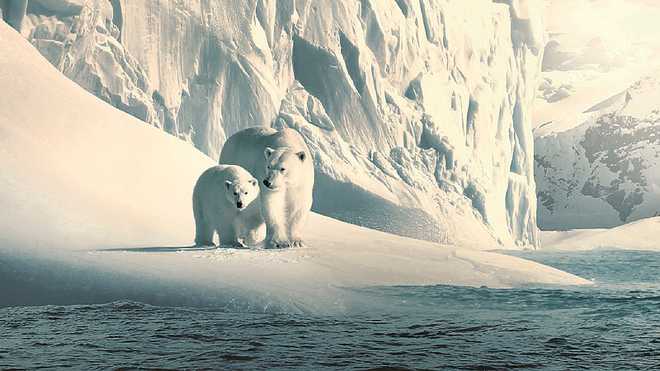
.
Shardul Bhardwaj
Wildlife documentaries have made us believe that Nature, more or less, works on the scale of a Hollywood cause-and-effect narrative. It has also reinforced the Biblical myth that either man does not belong with Nature or he is the conqueror. The idea of a wildlife documentary in itself is a paradox since it tries to bring together two opposing ideas namely: the non-linearity of Nature versus the linearity of cause-and-effect narrative. In such a state of affairs, the handful of the documentaries which have tried to point towards the need for harmony between man and the natural surroundings like Netflix’s Our Planet are before anything countering the very idea that Nature and its working can be understood simply in the manner of projections of human traits upon animals. Although to break through to the audiences Sir David Attenborough (the presenter) has to resort to simplifications to break down the complex relationships which each organism shares with the other.
The history of wildlife documentaries is so closely linked to the history of mainstream Hollywood and cinema itself that it is difficult to talk about one without the other. When photography arrived in the 19th century birds were killed in a large number to be put up on walls as decorative pieces. Conservationists were able to convince a lot of people that the photographs could now serve as souvenirs in place of the real birds. As motion pictures made appearance one of the initial attractions for audiences was animals being fed.
An early innovation in cinema by Eadweard Muybridge used stop motion photographs to study the horse’s gallop. Once the motion pictures became more than isolated scenes being projected to surprised audiences, one of the first genres to make its appearance was the safari films. These hunting and safari films like Hunting Big Game in Africa (1909) , Paul Rainey’s African Hunt (1912), etc. were sponsored by rich patrons who knowing their audiences concentrated more on titillation than the truth.
This trend of titillation has continued till the present day. In present day and age, there are several myths about natural habitats that have been actively created by the means of wildlife documentaries. Some National Geographic documentaries have been alleged to have created an untrue picture of the Savannah, Africa. The western audiences, for a very long time, believed the wide grasslands of Savannah to be completely devoid of human habitation, which in turn created this illusion of this idyllic wildlife world. The truth is that the Masai people are estimated to have lived and hunted in Savannah since the 17th century.
In such a state of affairs where willful anthromorphism, misinformation and titillation galore in the world of wildlife documentaries arrives Netflix’s Our Planet. The production team was loaded with the-state-of-art technology like modern camera stabilisers and fancy recording equipment. This technology has allowed the team to film moments and animals which have never been filmed before. It also allows them to shoot predators running after their prey without cutting and using edited shots to create the illusion of a continuous chase. Of course, these new technologies have been able to correct many criticisms arising out of the constraints of equipments of wildlife filmmaking. What this state-of-the-art equipment can’t correct is the want to titillate and present falsehood.
David Attenborough, in very clear words, has given us a warning that we are at the brink of total ecological destruction. At the same time, he sees hope in the resilience of nature, if understood sensitively, we can contribute in its resurrection. At such a juncture, it becomes important to try and bring the natural world to the audiences in a manner where they can place themselves in the large ecological habitat they inhabit. The natural world does not need added bits of information to make it interesting. Attenborough through his narration and the team through its work in Our Planet has been able to demonstrate that it’s possible to an extent to talk about the natural world and its complex web of relationships in a simple accessible language.



























